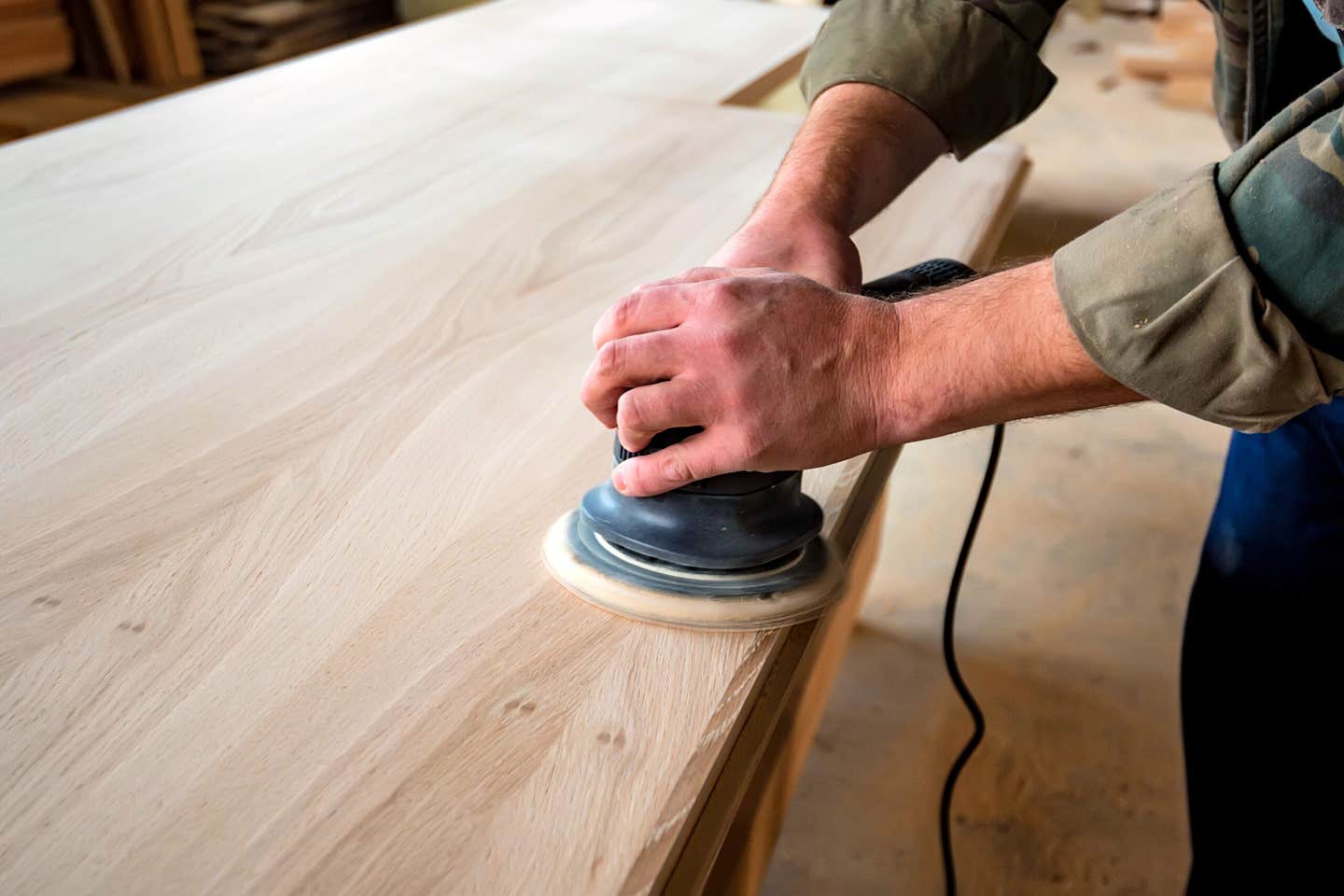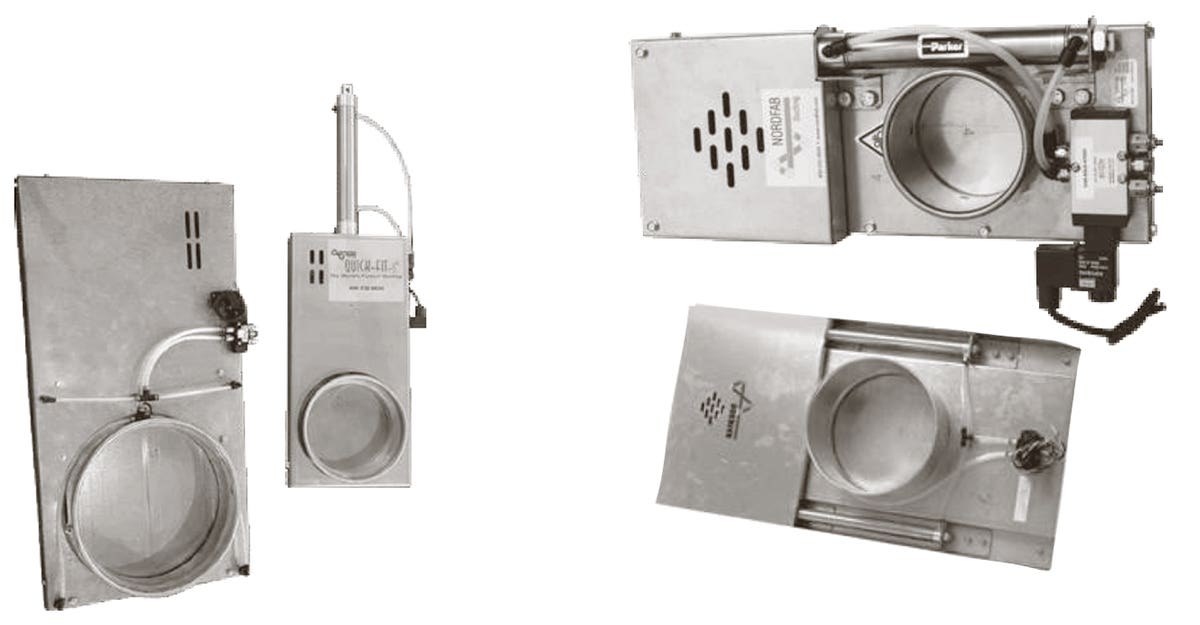The Ups and Downs of Outsourcing
Considerations for custom shops include quality, reputation and the bottom line.
It doesn’t need to be all or nothing. While some custom shop owners have become salespeople and installers for products built elsewhere, many others base their outsourcing decisions on values other than the bottom line. It’s not just about the money. They actually enjoy the work, and value the process of using heads and hands to create. For them, outsourcing can be a hybrid process where the custom shop still builds some or many components in-house, and only buys in when necessary. Those who have good people on staff may even decide to forego part of the enhanced margin from outsourcing and build in-house just to keep the team together. That’s because they understand the value of their skills, and knows that they will be needed the next time a client asks for a complex solution that isn’t available in the supplier’s catalog. Outsourcing isn’t always the solution, but it is almost always a viable option.
Advantages of outsourcing
Buying components saves money because a larger supplier can take advantage of economies of scale. The ‘factory’ can buy materials in larger volume and earn bigger discounts on everything from sheet goods to hardware, lacquer or foil. They can justify larger machines that are able to process several parts simultaneously, or do it faster (for example, spray coating several kitchens with a single setup), and with a bigger operation they can enjoy lower operating costs per square foot for everything from utilities to liability insurance. They can also invest in a higher level of automation, which reduces man-hours and thus payroll. Most national suppliers are large enough to run more than one shift per day, which dramatically reduces the unit cost of everything from table saws to CNCs, dust collectors and delivery trucks.
Outsourcing also saves time for custom woodshops because while the supplier is working on one job, the shop’s crew can be working on another. Or the supplier might be making doors and drawers while the woodshop builds cases for the same job. Plus, the larger shop can usually complete a project in significantly less time than a one- or two-man operation, so outsourcing can improve the shop’s job flow, sales volume and profitability. It also allows the cabinetmaker to spend more time on sales, marketing, design, planning and other aspects that need attention if the business is to grow.
Outsourcing can reduce delivery time, and that keeps customers happier, which means better referrals that play into stronger marketing. It lets a small shop expand without having to invest heavily in new equipment and machines, or spend time and money training new personnel, or take on larger payroll and other expenses. The practice also helps smaller shops avoid some of the impact of economic cycles, where a shop invests in larger plant or machinery during a bull market and then sees much of it lie idle during the inevitable slowdown that follows. When housing starts decline, the rent and lease payments still need to be paid. If those expenses have been reduced because less work is done in-house, then the chances of riding out the rough times are improved.
The shop stays cleaner too, and the owner isn’t paying an employee to clean it as often, or a sub to haul away the sawdust. The inventory levels are lower – often a lot lower – and that’s cash that isn’t tied up, or debt that isn’t mounting. With less work-in-progress, inventory and maybe even employees taking up room on the shop floor, workflow and efficiency can ratchet up a notch.
Words of caution
There are a couple of potential disadvantages to outsourcing. The first is that the woodshop needs to surrender at least some level of quality control, so it must select a very reliable partner and develop a long-term and mutually respectful relationship. The shop’s reputation is now based in large part on the quality of components that it didn’t actually make.
The second possible downside is that the shop has now subjugated its own catalog, at least in part, to the range of products offered by the larger supplier. That runs contrary to the very notion of custom work, because the larger outfits tend to all offer slight variations on a theme, rather than seriously individual designs. Here, a shop needs to retain the ability to enhance outsourced work and improve upon it, if it wishes to retain the bespoke nature of its identity. That is, it needs to be able to add to the supplier’s catalog in a way that sets the client’s kitchen or casework apart from the herd. That may be done with one-of-a-kind moldings or perhaps bentwood accents, locally made stained glass, unique color schemes or maybe even some extraordinary art hardware.
A custom shop must be more than just a catalog salesroom if it wishes to continue to be considered custom.
Sometimes, the answer is to mix and match suppliers to create a new level of customization. There is no rule that says an entire job has to come from a single outsourced supplier, and finding two suppliers that use the same design software may allow the shop to add elements from both catalogs. The danger here is of course that the job looks less cohesive. But the potential is huge, where a variety of materials can come together to create a truly unique, yet blended design. And getting creative while using outsourced parts offers a huge advantage over developing and building a one-off design in-house. The cost is now a known factor up front. There’s no trial and error, no re-do or guessing. Just send in the specs, get a bid and that’s what it’s going to cost.
Talking to oneself
Woodshops usually enter the waters of outsourcing much as a child samples the waves on a new beach – one toe at a time. They order a few doors or drawers on a small job, perhaps for boxes that they have already built for a pantry or a bathroom. And they do it with a vague sense of guilt, somehow feeling that this is akin to plagiarizing. The decision to place that first order is a small victory for head over heart. It signifies a recognition that, when it comes to the survival and fostering of a business, profit can preempt pride.
If the first project goes well, the goalposts change. Success breeds enthusiasm, and now the shop owner begins to take a hard look at the potential here. This may be a way, for example, to break through bottlenecks. Is the spray booth or the CNC router where jobs start slowing down? Can we outsource some or even all of the finishing or milling? Or both?
And then a cloud passes over the beach. If the woodshop can buy the entire kitchen from a manufacturer, why can’t the customer just go to one of the big box retailers?
So, step two is to have a serious discussion with oneself about how an outsourced, or more likely a mostly-outsourced job from a custom cabinet shop can still represent a better value for the end user than the same job from a big box store. If you can’t convince yourself of your value, you’re not going to convince a customer. Think about what all those years of experience have taught you about design that the hourly employee at the chain store can’t duplicate by just plugging dimensions into a software program. Think about the materials, finishes, textures and perhaps local hardwood accents that you can offer than the factory doesn’t. As a homeowner, would you trust a neighborhood custom kitchen builder with a proven track record more than a subcontractor hired by the big box outfit to tear out your old kitchen and install the new one? Will your customers appreciate the fact that they will have you with them at every stage, for every decision, and that you have proven sound judgment and the knowledge to help them make the right choices? Can you convince them of the innate value of that relationship?
It may help to let your customer know that the big box stores usually build a design using stock sizes and fillers, while your custom shop will be able to tweak the outsourced cabinets to work around odd dimensions, obstructions such as radiators or awkward interior door swings, rooms that are neither plumb nor level, unusual window or countertop heights and so on.
One of the essential differences between a job purchased through a chain retailer and a cabinet shop that uses outsourcing is that the woodshop can make specific changes while the chain store can only make general changes. This is a very important selling tool. A custom shop, for example, can change the drawer bottoms from melamine coated MDF to hardwood plywood, and ask the supplier to make only that change. A big box store may need to upgrade the entire job to the next (more expensive) level to accomplish the same objective. So, the customer can forego the better bottoms, or pay for a number of other unwanted upgrades.
Next, shop owners may wonder whether a cabinet or a component from a large supplier will be of the same quality as one that they build in-house. Here is a moment of soul-searching, where one must be truthful with oneself. Are you really that much better than the competition at assembling five-part doors or drawer boxes? Just keep in mind that most cabinetmakers only spend a few days a month milling and making those parts. The outsourcing supplier’s worker does nothing else all day long.
Then there’s choice. Small- to medium-sized woodshops, and especially those without a large CNC router, may have a handful of panel raising sets. That means the door style options that they can offer are fairly finite. Even a basic catalog from an outsourced supplier will include dozens if not hundreds of door options. And when it comes to something special – perhaps incorporating a pair of doors from an antique piece of furniture, or providing a specific grain pattern or unusual species – the shop can still handle those details in-house. So, the customer is served well on both scores. They save a little money and a lot of time by letting you outsource most of the job, and they can still enjoy the unique accents of a custom job.
The last step in starting out on this road is to think about the woodshop’s current client list, and the effect this new direction (outsourcing) may have on repeat clients. How personal is the business’s identity? Do customers often stop by the shop and enjoy the sight of craftsmen working on their project? Is there a connection here that is so elemental to the business that outsourcing might jeopardize a relationship?
Knowing your customers, when you tell them that you’re ordering in some of their job, will they still be on board?
Find a dancing partner
The first item on the agenda once the decision has been made to outsource is finding a supplier. One of the prime concerns in ordering a kitchen, even one that comes flat-packed on a pallet, is that this is a large, awkward and heavy consignment. Shipping is going to be costly. Instinctively, that encourages shop owners to try to find a local supplier where jobs can be picked up at the dock. And that often works, but more often it places limits on the whole endeavor. The local source may have a limited catalog. They may want the woodshop to select only from that, or they may offer some limited modifications. If the shop is very lucky, the local supplier will build exactly what is required with no concessions to stock sizing, material choices, hardware or other considerations. Frankly, that’s unlikely in smaller markets.
There are several very large suppliers who ship casework across the continent, and their volume alone reduces their costs to the point that, even with shipping costs, the total price of the job is competitive with that of a smaller local source. Many of these large outfits have been in business for a long time and they have worked out almost every kink and quirk imaginable. And the longer they’ve been around, the larger their catalogs have grown because they tend to move with the market and adapt to trends.
It’s a balancing act. Do you accept a smaller range of options in exchange for having a personal contact whose office you can visit, and perhaps even invite them to the jobsite? Or do you establish a relationship with a large, somewhat remote supplier who has more choices, and perhaps better pricing? It’s ironic that you are asking yourself the same kinds of questions here that your clients had to ask themselves before choosing you over the big box store.
Being part of a trade organization that helps cabinet and furniture shop owners talk with each other can be very helpful at this juncture. Custom shops from across the country (and if they’re beyond your geographical market, they’re not direct competitors) will often share their experiences of dealing with various suppliers, and make recommendations. General woodworking online forums may be less reliable because many of the contributors are not professionals, or those who are may not be as successful or as knowledgeable as the trade organization members.
Should you install?
Is it absolutely necessary for woodshops that outsource to offer installation? After all, this can be a grueling process that eats up a cabinetmaker’s time and doesn’t pay a lot. But it is one of the attributes that sets a custom shop apart from, and indeed above a big box option.
If a shop can establish a relationship with a competent local finish carpenter, to the point where the shop owner is comfortable recommending him or her to the client, that may be a better option. If the shop repeatedly works with this same carpenter, and the shop owner is on site when the casework arrives and also stops by after the job is done, that degree of involvement could be quite reassuring to a client even when the shop isn’t doing the install.
As the wood industry moves ever closer to full automation, and robots increasingly play a role in everything from loading CNCs to spraying finishes, it’s important for a woodshop owner to assess the long-term goals of his/her business. To customers, whether the components are built in-house or outsourced is probably not as important as the degree of personal service and interaction they have with the cabinetmaker, the level of support offered after a sale, and any warrantees and guarantees being offered on the casework and hardware. These factors combine to determine how much trust the client develops in the cabinet shop, and that is really the core of any successful business. How well the outsourcing supplier performs is also measured by that yardstick. If there are too many mistakes, a shop will simply switch its allegiance to a different supplier. So here’s a good rule of thumb – double the delivery time when placing orders with a new vendor. If the supplier promises delivery in two weeks, schedule the install for a month or more down the road. That way if there’s a problem, there is time for the order to be remade and delivered. And if it happens again on the next job, then you know it’s time to search elsewhere for components before the supplier’s reputation becomes yours.
This article originally appeared in the June 2020 issue.







